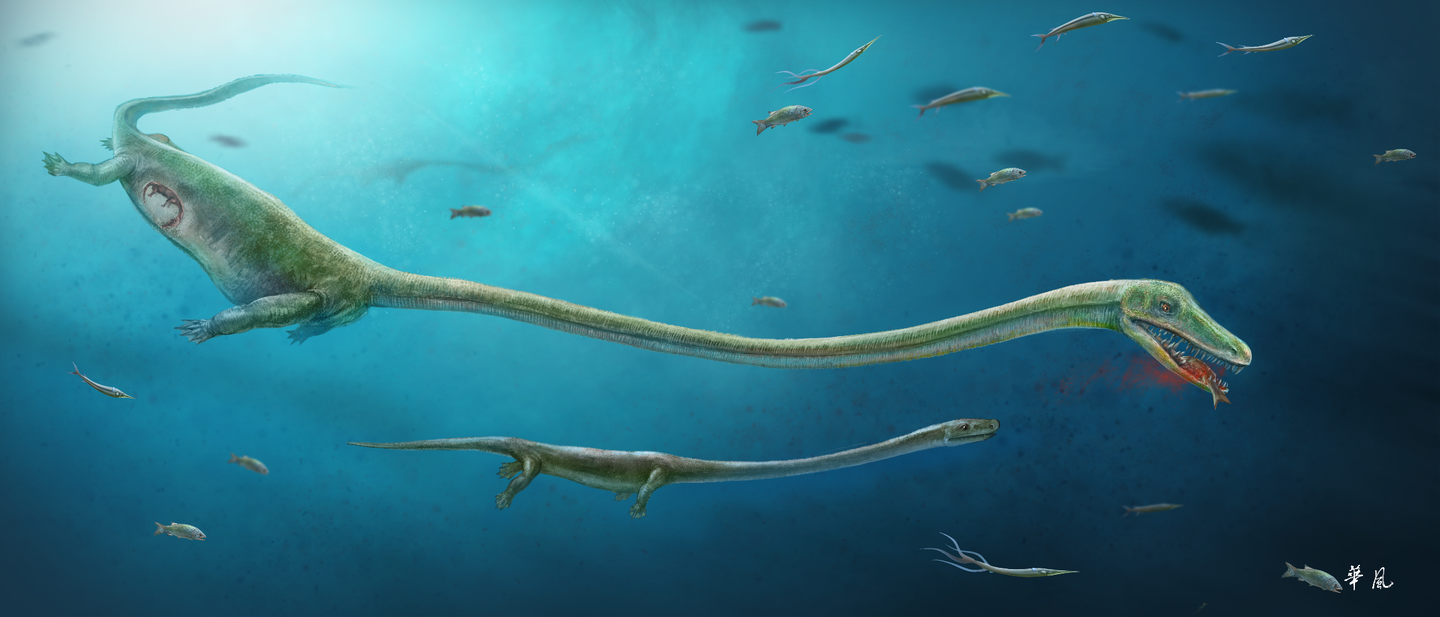Crocodile’s ancient cousin defied family norms, gave birth to live young
"Go suck an egg"

Long ago, a giant marine reptile named Dinocephalosaurus roamed the ocean off the southern coast of China. She was a blood-thirsty boss with a neck about five-and-a-half feet long, and, new research reveals, was pregnant with live young.
While the length of her neck is unusual (and, we imagine, made chartering waters extremely difficult) this dino’s discovery is more significant because of her methods of reproduction. The findings disrupt several previously held beliefs about the nature of these reptiles’ reproduction abilities, according to the paper published in Nature Communications.
Ancient members of the Archosauromorpha family and their modern descendants—birds and crocodiles—all lay eggs, which for a time seem to be devoid of life but eventually hatch and give way to squirming, scaly little critters.
In egg-laying animals, the shell is an extremely important space in development. The creature’s body grows and changes so that when emerges, it’s ready to take on life and all the challenges that come with it. The egg stage can even determine the sex of crocodiles, which is shaped by the temperature around the animal’s early encasing. Cold temperatures, on the whole, make for females; warmer temperatures make males.
The ancient marine reptile profiled in this new report, however, gave birth to live offspring, which likely came out of the oven fully-baked and with a sex predetermined by genetics, not early environment.
What a rebel.
The researchers came to these conclusions after studying one of these long-necked mamas, preserved in sediments for millions of years. The particular specimen they found had one (really) long adult neck and a shorter neck from a Dinocephalosaurus embryo that was still in the womb when its mother died.
This discovery creates an opportunity for scientists to reimagine the possibilities for the Archosauromorpha, which also includes turtles and lizards. Scientists think the earliest forms of these animals originated 260 million years ago, but our record of their reproductive abilities only went about 190 million years back and indicated only egg-laying behavior. The preserved adult and fetal Dinocephalosaurus, however, are from 240 million years ago, filling in a big gap in family history that the researchers are only beginning to unpack.
Maybe one day they’ll explain what this dino was doing with such a crazy long neck.